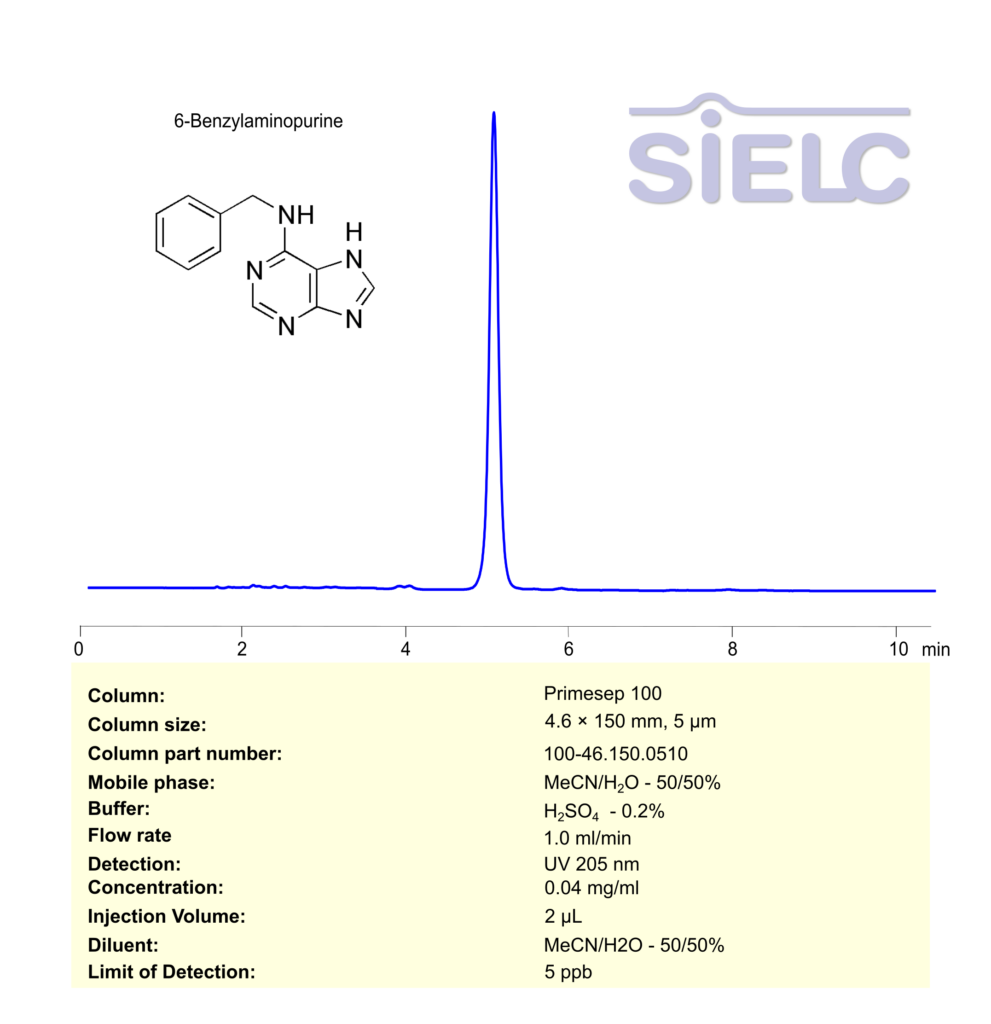High Performance Liquid Chromatography (HPLC) MS Method for Analysis of 6-Benzylaminopurine (N6-Benzyladenine) on Primesep 100 by SIELC Technologies
Separation type: Liquid Chromatography Mixed-mode SIELC Technologies

High Performance Liquid Chromatography (HPLC) Method for Analysis of 6-Benzylaminopurine
6-Benzylaminopurine (N6-Benzyladenine, 6-BAP or BAP) is a synthetic cytokinin commonly used in plant biology and tissue culture to stimulate cell division and growth. It is a potent growth regulator and is applied to enhance plant tissue differentiation, particularly for shoot induction.
Key properties:
- Function: Promotes cell division (cytokinesis), shoot formation, and delays senescence in plant tissues.
- Applications:
- Extensively used in plant tissue culture for micropropagation, promoting the growth of shoots in various plant species.
- Also used to improve fruit set and increase crop yields in agricultural practices.
6-Benzylaminopurine is one of the most commonly used cytokinins in horticulture and laboratory studies.
6-Benzylaminopurine can be retained, separated and analyzed using a Primesep 100 mixed-mode stationary phase column. The analysis employs an isocratic method with a simple mobile phase comprising water, acetonitrile (MeCN), and sulfuric acid as a buffer. This method allows for detection using UV 210 nm.
You can find detailed UV spectra of 6-Benzylaminopurine and information about its various lambda maxima by visiting the following link.
| Column | Primesep 100, 4.6 x 150 mm, 5 µm, 100 A, dual ended |
| Mobile Phase | MeCN – 50% |
| Buffer | H2SO4 -0.2% |
| Flow Rate | 1.0 ml/min |
| Detection | UV 205 nm |
| Sample | 0.1 mg/ml |
| Diluent | MeCN/H2O- 50/50% |
| LOD* | 5 ppb |
| Class of Compounds | Phytohormone |
| Analyzing Compounds | 6-Benzylaminopurine |
Application Column
Primesep 100
Column Diameter: 4.6 mm
Column Length: 150 mm
Particle Size: 5 µm
Pore Size: 100 A
Column options: dual ended





